All aboard the Night Tube, the London Underground’s long-overdue, politically contentious, sometimes raucous overnight service.
Bond Street, Central Line. 2:14 a.m.
I almost trip over the girl lying on the train platform as I turn the corner from the bottom of the escalators.
She’s not passed out or asleep; she’s propped up on her elbows as if she were watching TV on her living room floor. Her name is Lilly Jones, she’s in her early 20s, and she’s been out on the town. She’s laying down because she’s been waiting 30 minutes for the much-hyped night service of the London Underground. She’s tired. And cranky.
“I hate the Night Tube! It’s bloody rubbish!”
I move to sit down next to her to commiserate, but then a voice somewhat passive-aggressively announces over the speaker: “Could all passengers please stand up on the platforms and remain behind the yellow line. Please, all passengers STAND UP.”
Jones reluctantly stands up. A young South Asian man in jeans and a jacket standing nearby gives a mock cheer and a slow clap.
“I should have taken an Uber,” Jones says.
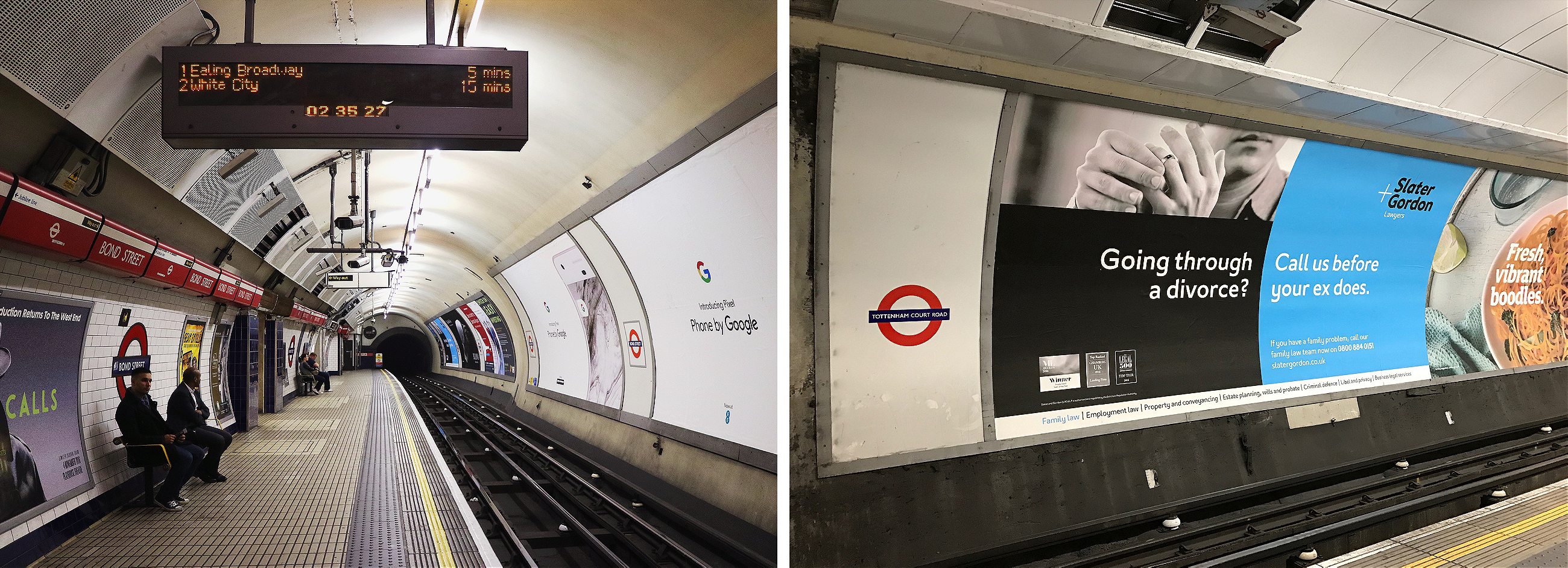
More than 153 years ago, London pulled off the world’s first subterranean train system: the world-famous London Underground, a.k.a. the Tube. In the words of the former Mayor of London, Boris Johnson, the Tube is the “throbbing cardiovascular system of the world’s greatest city.”
But until recently, this system only throbbed between the hours of 5 a.m. and midnight. Overnight train service simply did not exist, except for one magical night: New Year’s. Then last year—thanks to the culmination of a century-and-a-half of technological innovation and some political wrangling—the Night Tube chugged into existence.
On Aug. 19, 2016, London’s new mayor, Sadiq Khan—plus a whole lot of press and a BBC documentary team—boarded the first Victoria Line Night Tube (which runs south to north; color: light blue) northbound from Brixton in South London.
It was a strange time for London; the shocking referendum vote to leave the European Union had taken place just weeks before. The Brexit hangover was still acute, and cosmopolitan, “remain”-voting London was functioning in a fog of collective dread. Khan folded the Night Tube’s grand opening into his post-Brexit message that #LondonIsOpen, even if much of the rest of England had voted to pull up the drawbridges.
Like most Londoners, I hate the Tube. I also love it. In my 10-plus years as a London nine-to-fiver, the Tube’s rush “hour”—which now bleeds into most of the day—made me question my life choices daily. But I also know that the Tube is incredible and impressive and performs miracles regularly. I decided to spend a couple of nights exploring the strange new world of the Night Tube. Partially because I could, and partially to see what I could learn about the city, and partially to celebrate a boon for drunk people trying to get home faster.

A Jubilee Line train from Westminster Station, 12:35 a.m.
I’m riding the Jubilee Line (runs northwest to southeast; color: silver, to mark the Queen’s Silver Jubilee in 1979) on a Friday after midnight. There’s a time-honored Friday tradition in London: go to the pub with colleagues for “one or two” pints, drink through dinner, inhale packets of peanuts or crisps and a final beverage before pubs close at 11 p.m., then join the exodus of tipsy Londoners rushing to catch the Last Tube.
But this time, it’s not the Last Tube. People seem merry, but not plastered. Mostly. One man looks a bit worse for wear. My travel companion and I had noticed him a few minutes before, sleeping standing up at Westminster station as a Tube employee named Melissa, wearing an orange reflective vest and holding a walkie-talkie, eyed him warily. She decided he was fine for the time being, but radioed the risk of “a potential code three” at the next station. I asked her what a code three meant.
“Can’t tell you, it’s highly confidential,” she said. “Just joking. It’s the code for vomit.”
Had there been seen a lot of code threes that night? “It’s been pretty quiet, actually, much calmer than usual. It’s because people aren’t downing that last drink to catch the Last Tube, isn’t it?”
Anyone who grew up here, or lived here in their 20s, has memories of house parties coming to a screeching halt as guests dash out en masse to scramble for the Last Tube: the cramped, boisterous shuttle that shunted thousands of Londoners—in various states of drunkenness—back to the outer boroughs to their kebabs and hangovers. To miss the Last Tube was to be sentenced to an hours-long night bus or to commit to making a night of it, staying out until the First Tube at 6 a.m. It’s hoped that the weekend service will wean Brits off their pre-closing-time binge and thin out the hordes of the drunken midnight rush hour.
It’s also supposed to do wonders for the city’s economy. The Night Tube, which now carries about 200,000 passengers every weekend, is expected to boost London’s economy by £360 million a year. More importantly, the all-night service is an invaluable boon for those employed in the roughly 723,000 London jobs—one in eight—that involve night work, including cooks, bartenders, waitresses, nurses, doctors, and cleaners, not to mention the crew that services the Underground while London sleeps. It’s been a long time coming.
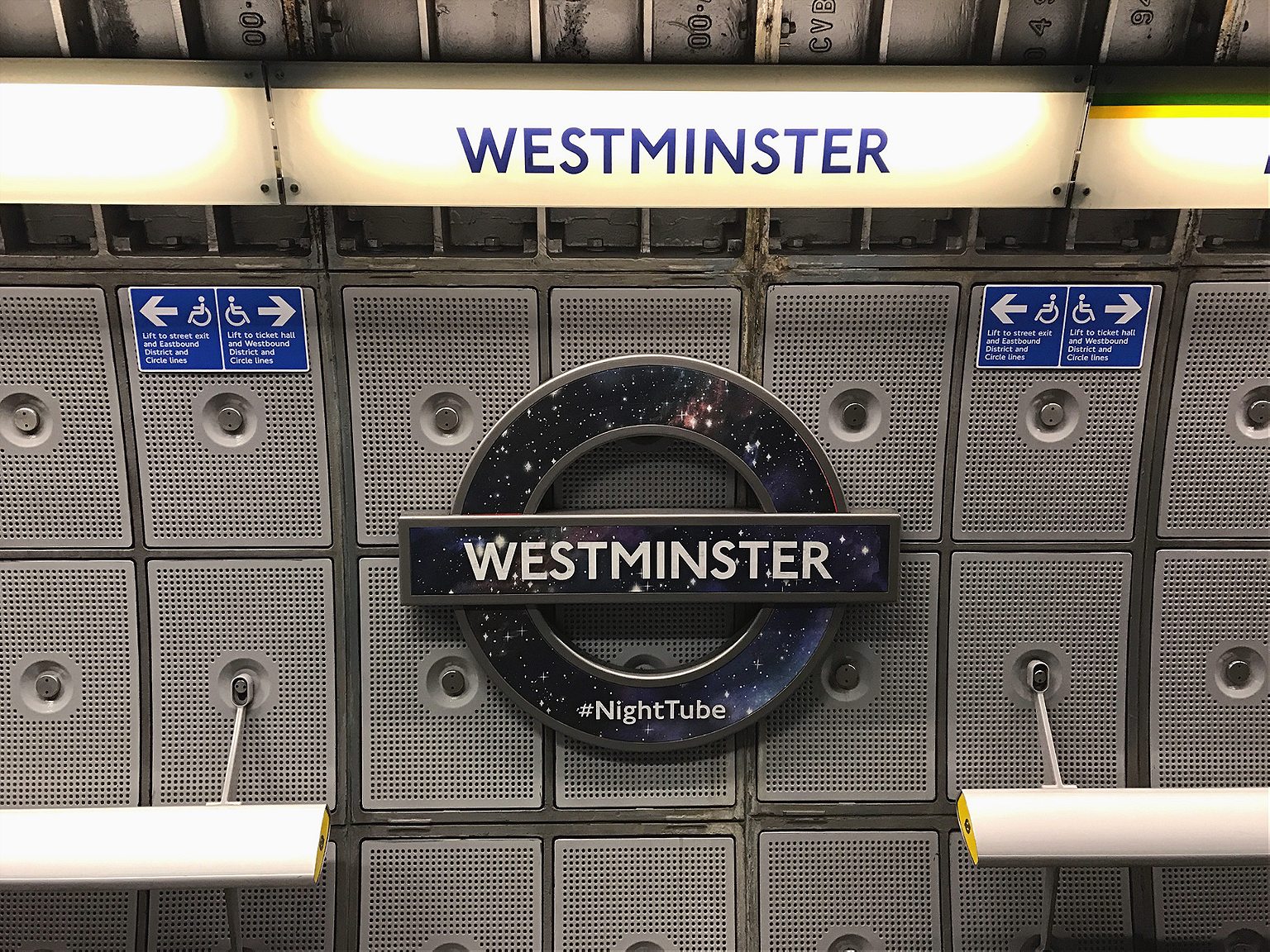
Farringdon Street Station, Metropolitan Railway, Jan. 10, 1863.
The world’s first underground steam train—a few gas-lit wooden carriages pulled by steam locomotives—travelled three miles through a tunnel from Paddington Station in the west to Farringdon Street in the heart of London.
The inaugural train carried London’s elite businessmen, officials, and government ministers, and was then followed by a 700-man banquet in Farringdon Station, although the prime minister, Lord Palmerston, passed on the invitation. (He was by then almost 80 and said he would prefer to spend as much time as possible above ground.)
London in the mid-Victorian period was a 250,000-horse town with a population of 2.4 million, the largest city in the world. Then, like today, London was a victim of its own success. Its medieval streets were so stuffed with beasts, carts, and bodies that it was constantly gridlocked. Business was suffering and the masters of the empire needed a new way to get around.
An underground train wasn’t a popular idea at first. Religious leaders wrung their hands about disturbing the devil in his home. The London Times—nothing if not consistent in its editorial suspicion of change—called the idea of underground travel “an insult to common sense.”
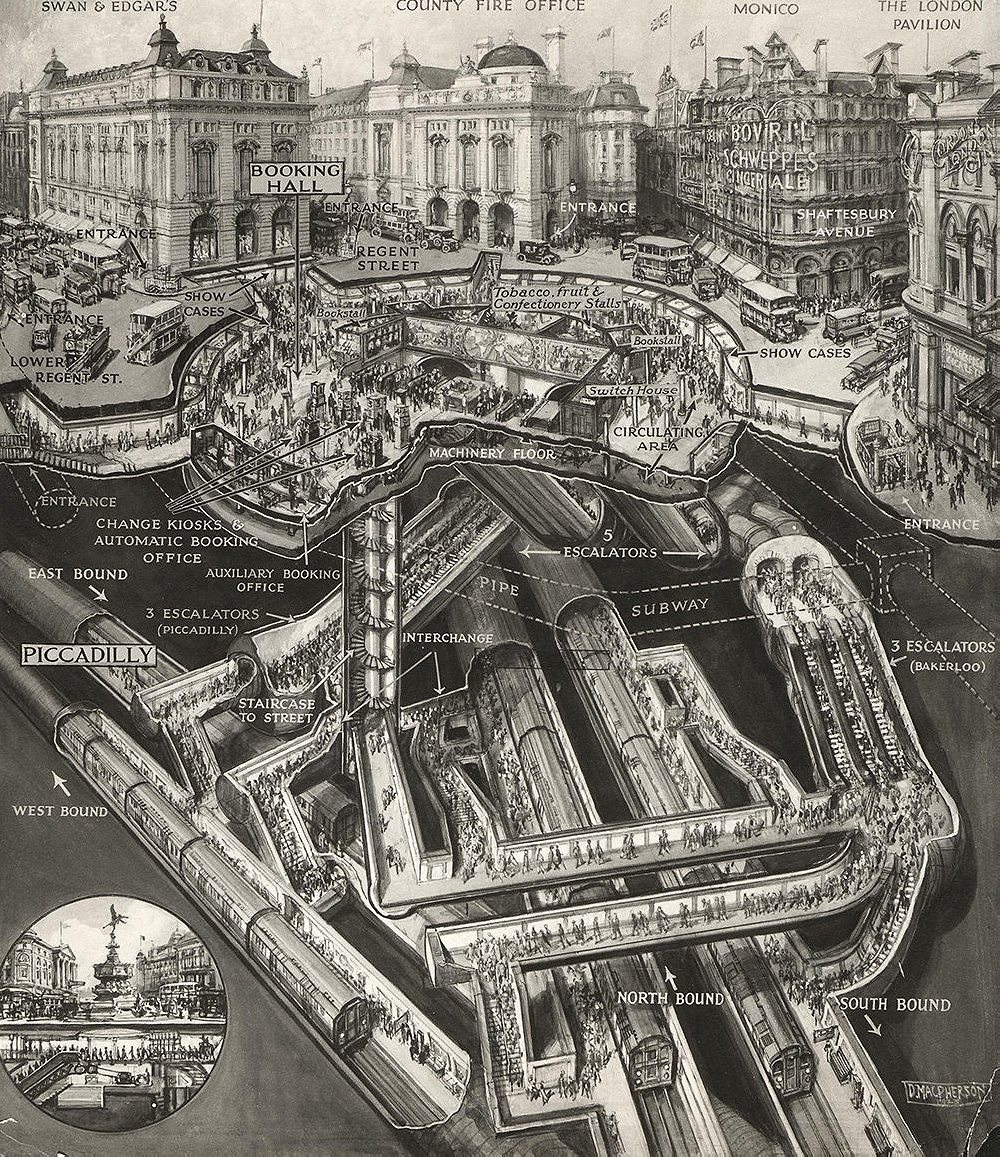
But it was a roaring success. It powered London’s expansion and brought rural villages into the fold of the city. The London Underground—nicknamed the Tube in the early 1900s for the shape of its tunnels—now serves a population of 8.6 million and carries more than one billion people a year. The history of the Tube, like London’s history, is grand, proud, and macabre. There are myths and partial truths about meandering tunnels, plague pits, and secret, shuttered stations. During both World Wars, Londoners sheltered in Tube tunnels. (Talk show host Jerry Springer was born in Highgate station in North London during a German air raid in 1944.) For a small window of time in 1868, it was possible to travel by Tube to public executions at Newgate, in what Tube historian and author of The Little Book of the London Underground David Long described to me as “a perfect collision of medieval London and modern technology.”
The map of the London Underground doesn’t just make a great shower curtain—it’s become the dominant visual reference of the city, despite the fact that it’s not geographically accurate. “I’d say that most Londoners can no longer navigate around London above ground easily, because the Tube map has become the mental map of London that everyone uses,” says Long.
The Tube and the Tube Map even have their own niche in London’s drinking culture. Tube pub crawls involve stopping at a pub at each station. The drinking game “Mornington Crescent” tests your intricate knowledge of the network. (How do you get from Mornington Crescent to Elephant & Castle? No looking at the map. If you fail, drink.) People throw parties at which you must come dressed, somehow, as a Tube Station (Angel and Shepherds Bush seem feasible, others, like Tooting Bec and perennial favorite Cockfosters, less so).
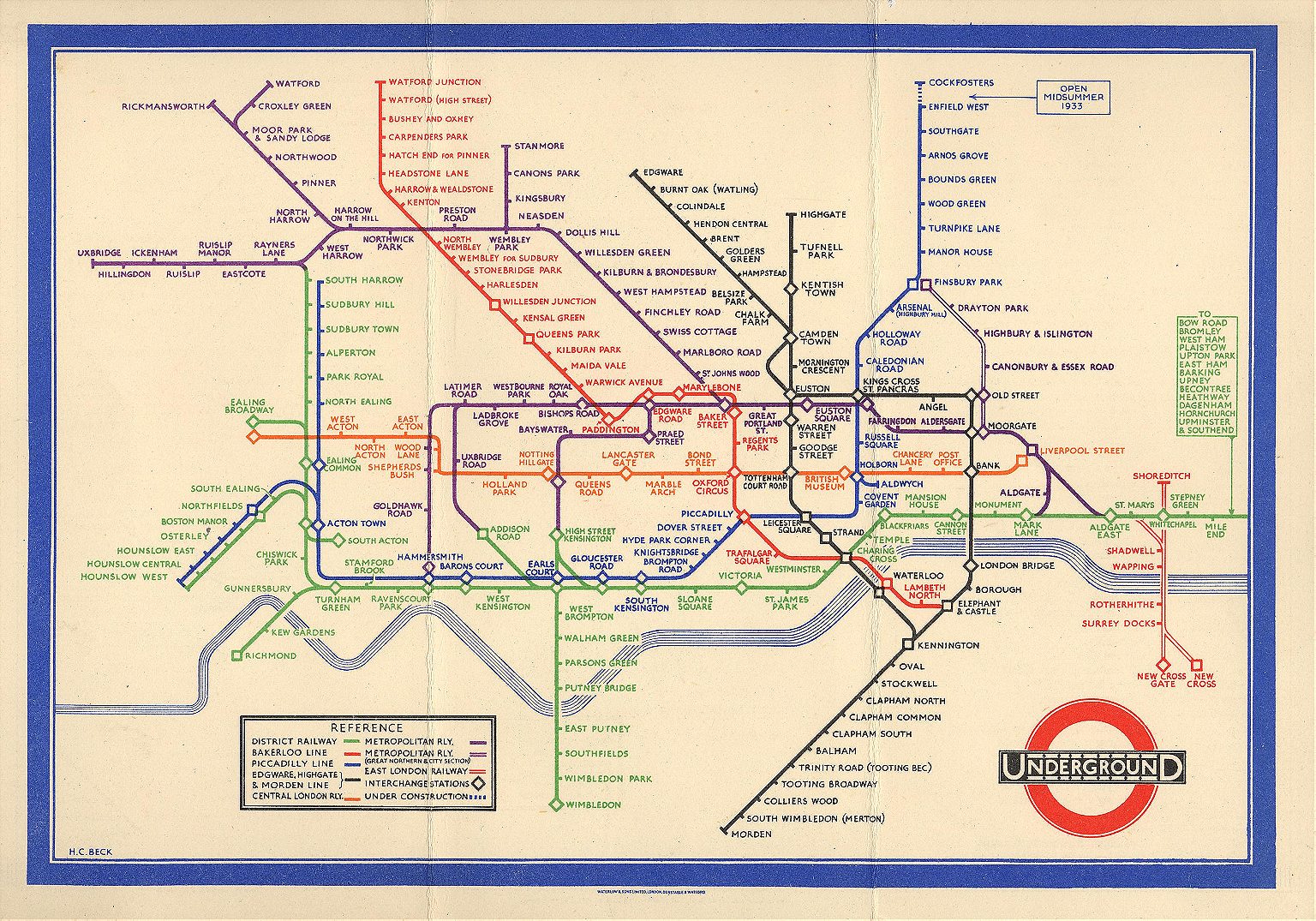
Oxford Circus Station, Central Line, 2 a.m.
I follow a fashion student named Hayden down the escalators after I hear him shout “Woo-hoo! Night Tube!” Hayden and his flatmate live in the (far) northwestern suburb of Wembley, and went out in Soho to celebrate for the first night of the all-night Jubilee Line, the third Tube line to get the all-night treatment after the Victoria Line and the Central Line (runs east to west, color: red.) From Oxford Circus, it’s one stop to Bond Street for the Jubilee Line connection and their new chariot home.
The new service will get them there in 30 minutes, rather than at least an hour or two on a night bus. (There is a respectable network of night buses, but in a city as sprawling as London, these lumbering journeys can take longer than some flights to mainland Europe. And taxis home can cost more than some flights to mainland Europe.)
“I love the night tube!” Hayden says. “It’s going to be such a great thing. Record my enthusiasm!”
Tottenham Court Road Station, Central Line, 2:45 a.m.
Three cleaners, plastic bags in hand, are working at the top of escalators on the Northern Line (runs north to south; color: black) the other Tube line that passes through Tottenham Court Road Station, wedged between Oxford Street and Soho.
Joseph, Dana, and Michael—all originally from Ghana—are some of the thousands who clean trains, platforms, stations, and depots. More than 95 percent of cleaners on the London Underground are immigrants, and three-quarters come from African countries. Cleaning on the Underground is some of the most poorly paid work in London, but since 2010, they are guaranteed a minimum wage, and they are members of the RMT union.
But they are some of the many workers who can benefit from the Night Tube. “I come in from Borough [south of London Bridge], and now I can get the Tube instead of the night bus, says Joseph, 53. “It’s much faster.” Joseph lived in Germany for many years, but came to the U.K. because he wanted his son to attend university here.
They say the first couple of Night Tube weekends—when around 150,000 used the service—there was little of the feared debauchery, or even crime.
“Someone did shit on the Northern Line platform tonight though. Platform Two. About 10:30 p.m.,” Dana interjects. He suspects it was booze-related. (This was, of course, not the Night Tube, but the regular-hours Tube. But maybe this is why they call the Northern Line the Misery Line.)
That is a “code two,” he says. They then explain to me in the rest of the not-so-secret codes that station loudspeakers use to communicate incidents. Code one is blood; code two is feces or urine; code three, as we have learned, is vomit; code four is any kind of spillage not covered by the first three, code five is broken glass. (“Inspector Sands” is the code used to alert staff about an emergency like a bomb scare or fire. So if you hear it, it’s probably not good news.)
They seem sanguine about the potential extra work and extra drunk passengers that might come with working this shift; so far it’s been fine. “It might be a different story if there’s a football match,” says Joseph, well-versed in the havoc that tens of thousands of drunken soccer fans can wreak on the city’s transport network.
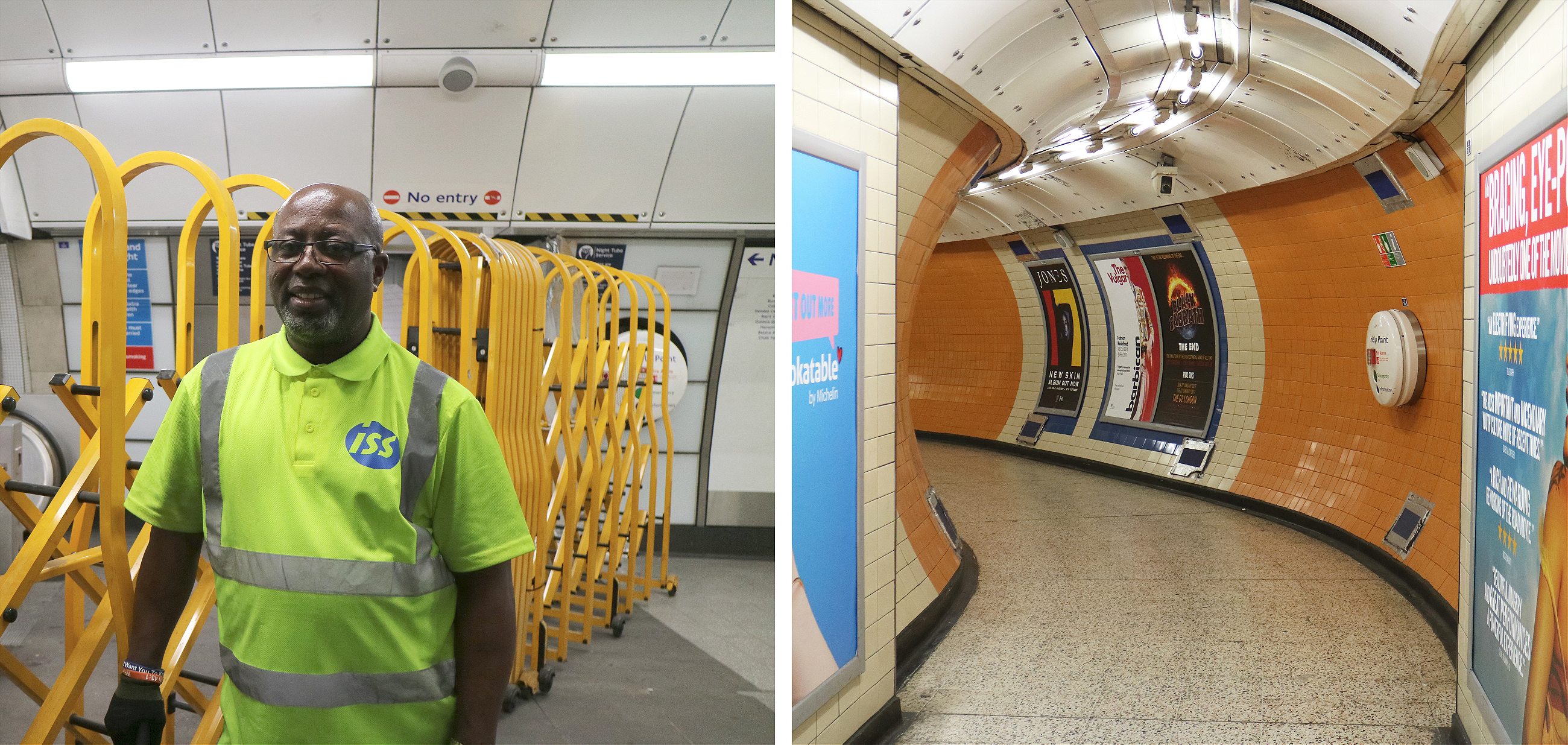
Before the word acquired a different meaning in the adult film industry, a “fluffer” was a person who cleaned the London Underground’s tunnels at night, removing dust, trash, and other detritus from the rails, which build up and become a fire hazard. This dangerous, badly-paid job had to be done by hand, and it was done mostly by women. This was the case until as late as the 1990s. Now, there’s a ‘cleaning train’ that does some of the job, but people still do most of the work, and they still work at night, only now with flashlights and protective gear.
Fluffing is just one of the many subterranean night jobs—along with station cleaners like Joseph, Dana, and Michael and those making repairs, among other tasks—that enables the Tube to keep going. Maintaining the Tube is constant, complex battle, and it mostly has to be done at night, when the electric current that runs through the rails is turned off.
An all-night Tube was once unthinkable. But over the last few years, Transport for London—the local government body in charge of public transit—spent billions modernizing and repairing the network after decades of decline, mismanagement, and ill-fated privatization attempts had rendered the Underground a clichéd punchline of awfulness, unreliability—and, occasionally, danger—in the 1990s and early 2000s.
London’s network was never designed for round-the-clock action
This overdue improvement made the Night Tube possible, but there will probably never be full 24/7 service. Unlike New York City’s subway system, London’s network was never designed for round-the-clock action. In New York, most of the main lines have four tracks (two for express trains, two for local) and late-night and weekend trains get switched between tracks to allow for maintenance. London’s Underground is built on a single track. And any modernization strains against the Underground’s Victorian foundations. Most of the Tube might never get air-conditioning, for example, because the oldest, deepest tunnels are too narrow for the heat generated by the machines to escape.
The Night Tube’s inaugural run was also delayed for more than a year by political squabbling. In August 2013, the Conservative then-Mayor of London (now Brexiteer Foreign Secretary) Boris Johnson announced that the London Underground would start running a weekend 24-hour service in the fall of 2015. But Johnson had no plans in place to make this happen. Worse, in the same speech he announced the layoff of hundreds of London Underground staff and the closures of station ticket offices, breaking a central campaign promise.
For the next two years, the bosses at London Underground (which runs the Tube under Transport for London) were locked in a battle with all four transport unions over safety, staffing, and driver pay for the extra work. The unions staged several strikes, including the one in July 2015 that was the worst in a decade. (Picture what New York City might look like without most of its subway service for 48 hours—except it’s raining and the cabs are more expensive.)
A deal was finally reached in March 2016, but the situation hasn’t been totally resolved. There have been more strikes since, and more are on the way. London keeps growing, and the Tube gets more crowded, and upgrades are needed more and more quickly, but there is limited funding for improvements. Neither side can give in, so the Tube’s bosses and the unions are fated to keep battling it out.
Canary Wharf, Jubilee Line. 4:45 a.m.
It’s still dark when my companion and I emerge from Canary Wharf station into the grid of skyscrapers on the Isle of Dogs—once a historic ship-building center in southeast London, now a business, finance, and media quarter that gave the London skyline some of its first tall buildings. Canary Wharf is a surreally bland, Matrix-like facsimile of a North American downtown—even more so at this hour, a ghost city of offices, roundabouts, and canals.
But clinging to the edge of this isle of skyscrapers is a vestige of Old London: its largest and oldest fish market. I’ve lured an American, seafood-loving friend on this odyssey with the promise of crab legs from Billingsgate Fish Market. It’s open to the public (hours are 4:00-9:30 a.m., Tuesday to Saturday) but until the Jubilee Line Night Tube—which spits us out just ten minutes’ walk from the market—it was a tough journey to make without a car.
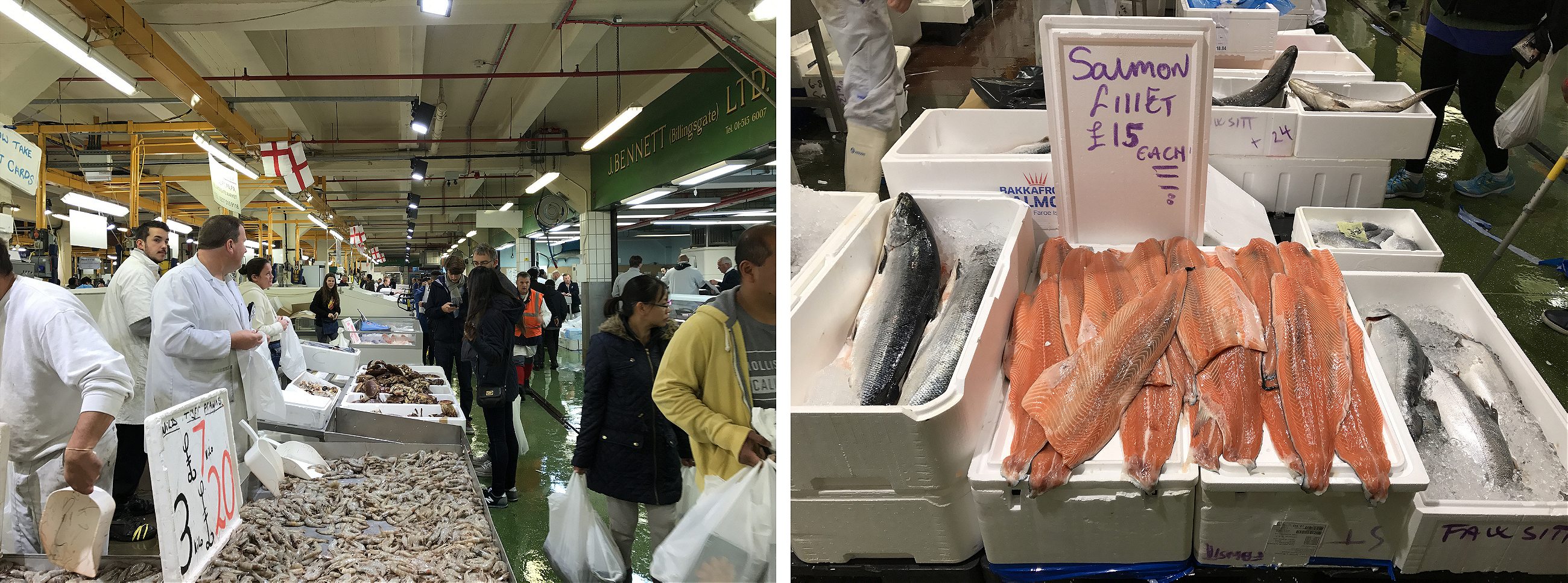
Philippe Ayache, a 24-year-old French engineer, hit the market the first weekend the Jubilee Line opened, leaving his flat in Brixton just as his roommates were returning from a night out. “I bought some sea bream, sea bass, red snapper, monk fish, and salmon. I wanted to make a bouillabaisse,” he writes in an email. He took the fish home on the Tube in his trekking backpack. “Thankfully the fish didn’t smell very much.”
This morning, pushing 5 a.m., the market is busy; under bright lights, stalls are fully stocked with white boxes of crab, shiny salmon fillets, writhing lobster, whole skate, and inky squid. The floor is wet, and men with carts push through the gangway shouting “Legs! Mind your LEGS! MIND YOUR LEGS!”
Mark Morris has been selling fish here since he was 12 years old. He buys fish from all over Europe, much of it from Iceland. He noticed that the first weekend of the Jubilee Line Night Tube brought a new crop of customers.
He’s pleased. “I’m not saying it’s going to revolutionize the market,” says Morris. “But just one extra customer every morning makes a difference to us.” They sometimes sell out, sometimes not, and leave when the market winds down at 7 or 8 a.m.
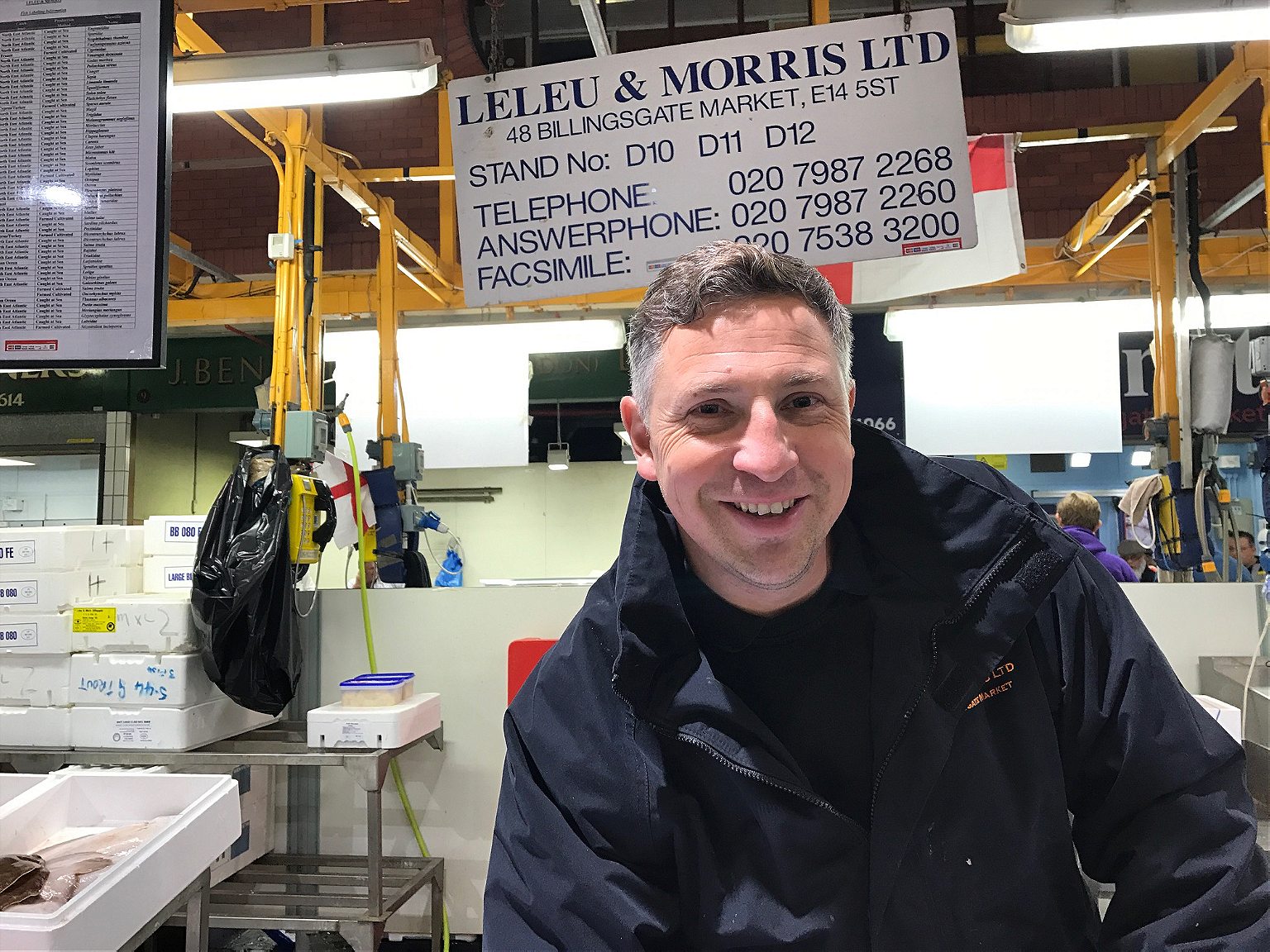
Others are not so enthused. “Took them long enough, didn’t it?” says the vendor at the Seahawk stand when we tell him we rode in on the Night Tube, alluding to the Tube drivers and unions, and the dispute that delayed the start date.
“It’s just pressing a button, isn’t it? It’s just a giant Scalextric set. They demanded more cash for the pleasure of doing the same thing they were already doing, which was sitting on their arses.”
Not a fan of the Tube, then? “Never use it myself. I drive in from Essex.”
My nights on the Night Tube were more solitary than I expected. Usually, apart from some central hotspots, it was rather empty. Sometimes, it was just me and a couple of British Transport Police officers—who apologetically told me they couldn’t speak to journalists and referred me to the Transport for London Press Office—and the Tube’s rather endearing, tiny mice. Transport for London has invested 3.4 million British pounds ($4.2 million USD) to beef up policing on the Night Tube, deploying 100 officers across the Tube map in addition to the ones patrolling in and around stations. But the Night Tube has not been the crime and anti-social behavior cesspit some feared: in 1.5 million journeys over the first few months, only 67 crimes were reported. Both the day and the night versions remain impressively safe for a city and network of this size.
Things have gone on mostly as usual. The Tube’s annual “No Trousers on the Tube Day” went ahead as planned, although the after-party numbers were dented by a 24-hour Tube strike in January 2016. The Night Tube is also planning its very own strike in April, over access to full-time jobs.
It’s too soon to know if the Tube will rescue London’s limping nightlife, or whether it will deliver the lofty stats for the city’s economy. But it’s already been good for bars and restaurants. And there is another very tangible benefit. London and New York, as twin centers of the universe, are often compared, but New York has always had an edge over London in late-night dining options. But since the Night Tube has kept London open a little later, restaurants are beginning to extend their hours on Night Tube nights.
If the Night Tube means there will be more places in London to get a decent burger and a beer after 2 a.m.—without a two-hour bus trip to get home—I’m all for it. To many Londoners, the Night Tube is a long-overdue necessity, getting people across the city in the mornings and very late nights. And while it probably won’t change London entirely as we know it, the service is part of London’s continual lurch towards modernity, inclusiveness, and optimism.
One thing, however, will never change: people are going to complain about the Underground—whether it’s at rush hour or at 3 a.m.
Top image: The Piccadilly Line at South Kensington station. Photo by: Transport for London